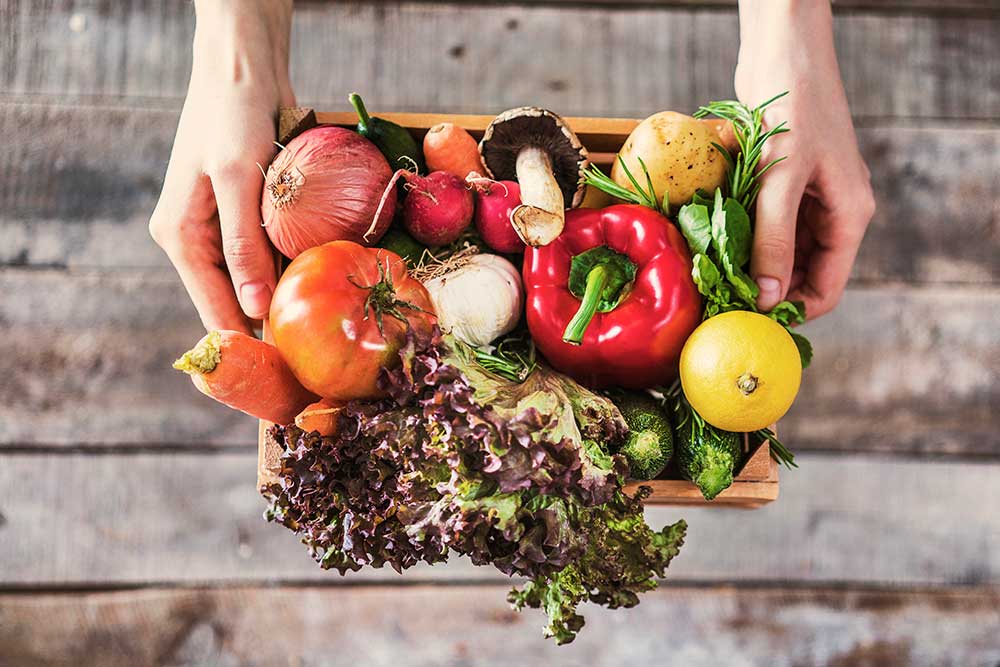Keeping on Track: Minimize Weight Gain During the Holidays

Hunter Bennett
There are very few things quite as exciting as the Thanksgiving period. The opportunity to catch up with family, get away from work, and simply sit back and relax, is something that all Americans look forward to on a yearly basis. But it isn’t all rainbows and unicorns.
Something that often comes with the delicious food and tasty beverages is thanksgiving weight gain. Something that we know can have negative implications for both our mental and physical health, our self-esteem, and of course, our wardrobe.
But it doesn’t have to be this way.
The Science Behind Overindulging
Did you know that the average Thanksgiving dinner packs around 3000 calories per person?
Sounds like a lot, right?
What if we consider that the average recommended daily energy intake sits at about 2000 calories per day for women and 2200 calories per day for men? Then we should really start to realize how big of an impact this single meal can actually have.
Especially when we realize that we don’t just eat Thanksgiving dinner.
We also have breakfast, and often a small lunch. This is then impacted by a couple of beers, a few glasses of wine, maybe a toast of nice whiskey, which is all followed up by nanna’s world-famous pumpkin pie.
You get the picture.
Now I appreciate that it may be hard to believe that a single meal has the impact to derail an entire years’ worth of progress – and in the short term, you would be right.
You see, the average weight gain over the holiday period tends to sit around 2-3 pounds (Hull, 2006; Díaz-Zavala, 2017). While this is indeed a lot when we consider it comes from what is ultimately a single day of eating, you may not think that it is really all that much in the long run.
However, there is a bit more to this story than first meets the eye.
Firstly, individuals who are already classified as either overweight or obese tend to experience significantly greater weight gain over the Thanksgiving period. Around 3-5 pounds is considered normal within these populations (Schoeller, 2014).
Secondly, it is very rare for people to lose the weight they gain over the Thanksgiving holiday period before the following years holiday period (Yanovski, 2000).
This means that the weight you gain over thanksgiving gradually increases exponentially on a yearly basis. You may only put on 2 pounds one year – but it is highly unlikely that you will lose any of that in the long run.
Then to make matters worse, the following year you are likely to put on even more than 2 pounds – which again, you will probably not lose the next year either.
You can see the issue here.
Over time this can lead to considerable weight gain, as well as a multitude of health complications over the course of your lifetime.
But don’t worry – because we have got you covered!
Related Article: Holidays Are Not The Only Contributor | 3 Ways To Avoid Annual Weight Gain
Minimizing Thanksgiving Weight Gain
Taking the above into consideration, we have put together what we believe to be some of the most effective tips at managing potential weight gain during the holiday period.
Get in a Pre-Thanksgiving Workout
When it comes to limiting thanksgiving weight gain, your first point of call is to get in a solid thanksgiving workout before dinner.
This could be done either first thing in the morning, or around lunch time – it doesn’t really matter.
The thing that does matter is that you want to get in a solid workout that not only helps you burn energy during the session, but also for hours after the session has been completed.
This phenomenon is known as the afterburn effect – and while we have written on it extensively in other articles, I will also touch on it briefly here.
You see, during exercise, your body is placed under mechanical and metabolic stress. While this may not sound all that pleasant, this stress is actually a very good thing. This is because it is ultimately what forces your body to adapt, thus allowing it to become fitter and stronger in the process.
Now after exercise, the body needs to work hard to recover from this stress to return it to a pre-exercise state. This leads to an increased energy expenditure for up to 72 hours after the completion of your workout.
Now there are a few caveats here.
Your exercise session needs to be of a high intensity, and it needs to include both strength training and high-intensity interval training.
The perfect afterburn workout can be found here – and I strongly recommend you follow that one for your Thanksgiving Workout!
Moderation During Thanksgiving Meal
So, even with a Thanksgiving workout, the possibility of overeating is still pretty high.
In fact, I would honestly say that it is still extremely high.
Which is why we want to take a couple of steps to improve your control during your Thanksgiving meal.
First thing I recommend is drinking somewhere between 500 and 1000mls of water within the half an hour immediately before your Thanksgiving dinner. This will speed up the rate at which you get full, while also making you feel more satisfied during the meal – essentially causing you to eat less food (HANDI, 2013).
Secondly, I would aim to start your meal with the least energy dense foods first. This means eating salads, vegetables, and lean cuts of meat before pies, pastries, and creamy pasta dishes.
creamy pasta dishes.
These foods tend to be quite filling, yet contain very few calories. By opting to eat these first, you leave less room for those foods that tend to contain a huge amount of energy, thus causing a reduction in your caloric intake for the meal.
Finally, you want to make sure that you don’t consume any caloric dense beverages. This means sticking to sugar-free drinks, water, tea, and black coffee.
Sugary drinks tend to contain a huge amount of energy, despite not being filling in any capacity. As a result, they offer the perfect means of increasing your energy intake without getting any satisfaction in the process – so it’s in your best interest to skip them entirely.
If you manage to stick to these three dinner tips, it will go a very long way to stopping your likelihood of overeating during Thanksgiving, and therefore limiting any unwanted thanksgiving weight gain.
Related Article: 3 Day Thanksgiving Workout Plan
Try a Post-Thanksgiving Workout
Our third and final step to limit our weight gain in the holidays is much like the first – get in a workout after Thanksgiving dinner.
Now I appreciate that it’s a bit unrealistic to get in a training session after doing nothing but eating and drinking for a few hours, but the first thing the next morning its time for you to dig deep and get in some work.
This provides the perfect opportunity to burn off some of the energy you have stored from the previous day, while also allowing you to extend the afterburn effect from yesterday’s workout – meaning that you can significantly increase your energy expenditure for the next couple of days too.
With this workout, I would honestly recommend using the same format from our pre-thanksgiving workout, but simply change up the exercises.
With this in mind, start your training session with a solid bout of weight training. Ideally, this would be comprised of 4-6 large compound exercises performed back to back using heavier loads, to maximize muscle damage and mechanical stress.
Follow this with 20-30 minutes of HIIT on your favorite exercise machine, and you have a recipe for success.
How to get back on track if you overindulged
So, what if everything falls to pieces? What if you fail to implement any of the above, you end up overindulging massively on Thanksgiving, and you gain a bit of weight in the process?
It’s certainly not outside of the realm of possibility.
Hell, it happens to the vast majority of the population every single year.
In my mind, the key is to get back on track as quickly as possible. Don’t dwell on the extra weight, and certainly don’t think about the things you should have done to limit that thanksgiving weight gain.
Your best bet is to acknowledge that you have gained some weight during the holidays and start planning your next steps to lose it.
This means hitting the big rocks of diet and exercise.
Try to avoid overeating going forward, and build your diet around vegetables, salads, and lean cuts of meat. With this, I would aim to start getting in the gym for 2-3 sessions per week, opting for a mix of weight training and high-intensity interval training every single session.
Stick at it and watch the holiday weight gain fall off – and then bookmark this article so you can implement the tips above the following year!
Take Home Message
While it may not seem like a huge deal at the time, overeating during Thanksgiving can eventually lead to exponential weight gain, which has the ability to eventuate into a myriad of health problems.
Which is why it is in your best interest to do everything you can to avoid it.
By implementing the tips outlined in this article you can take the first step to limit holiday weight gain and staying on track throughout the entire holiday period – setting yourself up for decades of success in the process.
References
Hull, Holly R., et al. “The effect of the Thanksgiving holiday on weight gain.” Nutrition journal 5.1 (2006): 29.
Schoeller, Dale A. “The effect of holiday weight gain on body weight.” Physiology & behavior 134 (2014): 66-69.
Díaz-Zavala, Rolando G., et al. “Effect of the holiday season on weight gain: a narrative review.” Journal of obesity 2017 (2017).
Yanovski, Jack A., et al. “A prospective study of holiday weight gain.” New England Journal of Medicine 342.12 (2000): 861-867.
Handbook of Non Drug Intervention (HANDI) Project Team. “Pre-meal water consumption for weight loss.” Australian family physician 42.7 (2013): 478










